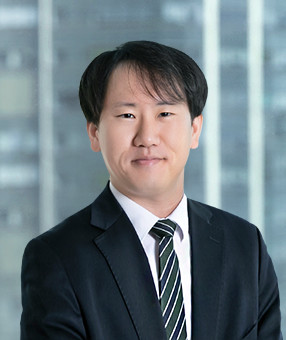On November 1, 2024, the Korean Intellectual Property Office (KIPO) implemented new enforcement rules to the Patent Act and the Utility Model Act (hereinafter, "New Rule"). The New Rule includes restrictions on adding or correcting inventors, mandatory disclosure requirements for the inventors' nationality and country of residence, and changes to the examination order of divisional applications. Notable changes to the New Rule include the following.
Stricter procedures for adding or correcting inventors
Under the old rule, inventors could be added or corrected without requiring special supporting documents prior to the issuance of a patent. This has led to numerous instances where individuals who did not contribute to the invention were arbitrarily listed as inventors or true inventors were omitted. For example, there have been cases where minors were added as inventors for highly specialized technical inventions, and applicants (companies) removed actual inventors and arbitrarily added third parties as inventors.
Under the New Rule, if an inventor is to be added or corrected, supporting documents (confirmation documents signed by the applicant and the inventor being added or corrected) must be submitted before a patent is issued. In addition, during the period between the allowance of the application and the issuance of the patent, adding a new inventor or correcting an existing inventor (unless it's the same inventor) is not permitted. This restriction is due to the examination procedure being deemed complete once the application is granted.
On the other hand, when the inventor is clearly incorrect (e.g., a clerical error), submission of supporting documents is not required. Additionally, if there is a special reason that makes signing or stamping impossible (e.g., inventor's death), the New Rule allows the confirmation documents to state such a reason and the signature or stamp can be omitted.
KIPO hopes that the New Rule will prevent indiscriminate corrections of inventors and ensure the accuracy of inventor information. However, with the stricter procedures for adding or correcting inventors, it will be important to accurately disclose inventor information when filing a patent application.
Obligation to disclose inventors' nationality and country of residence in the application
Under the old rule, if an inventor is a foreigner, the inventor's nationality can only be disclosed in the application at the inventor's request. The New Rule now requires the disclosure of a foreign inventor's nationality and country of residence in the application.
The New Rule is designed to take into account the fact that inventors are the ones that have the right to obtain patents under Korean patent law, and that inventors' nationality and country of residence can help identify national core technologies, facilitating joint technology development and preventing the overseas outflow of key personnel.
Changes on Examination Order for Divisional Applications
Under the Patent Act, patent applications are examined in the order that examination requests are filed. Previously, however, there was an exception for divisional applications. The old rule allowed divisional applications to be examined based on the order of when the examination request for the "parent" application was filed. As such, even if the examination request for a divisional application was filed later than a standard patent application, as long as the parent application's examination request preceded the filing of the standard patent application's examination request, the divisional application would be examined before the standard patent application.
However, with the increasing number of divisional applications being filed, this system caused significant delays in the examination of standard patent applications. Moreover, some applicants received their divisional application examination results earlier than intended, sometimes even before the final decisions on the parent applications were made. On such occasions, applicants were compelled to file multiple extension requests to allow sufficient time to respond.
Under the New Rule and the New Regulations on Handling Business Affairs Regarding Examination of Patent and Utility Model (hereinafter, "New Regulation"), all applications, whether divisional or otherwise, will now be examined strictly in the order the examination requests are submitted. KIPO indicated that these changes aim to address delays in the examination of standard patent applications caused by the increasing number of divisional applications.
As a result, examinations of divisional applications may be delayed by approximately 5 months, extending from 12 months to 17 months. In some cases, however, the delay may result in potentially reducing the term of protection, especially if serial divisional applications are filed.
For applicants wishing to expedite the examination process for divisional applications, the applicant may consider utilizing the Patent Prosecution Highway (PPH). The New Regulation has reduced time for prioritized examinations via PPH from 4 months to 3 months after the PPH request is granted. Thus, utilizing the PPH can be an advantageous option to accelerate examination.
Streamlined Patent Registration: Faster Outcomes for Successful Appeals in Korea
According to the current Intellectual Property Trial and Appeal Board ("IPTAB") practice guidelines, when the IPTAB trial examiners decide in favor of the applicant in an appeal against a Final Rejection, the trial examiners may issue an allowance for the patent application if it is deemed administratively inefficient to remand the application back to the KIPO examiners for re-examination. In practice, most IPTAB trial examiners do not directly grant a patent but instead remand the application back to the examination bureau at KIPO for further review. As a result, even when an appeal is successful, there is an additional delay of 1 to 2 months before a Notice of Allowance is issued.
In response, IPTAB announced in a KIPO press release on December 31, 2024, that starting in January 2025, unless there are outstanding issues that were not reviewed during the examination stage, or new grounds for rejection are discovered necessitating further review, IPTAB trial examiners will directly issue an allowance for patent applications.
This procedural change is expected to significantly reduce the time between a successful appeal and allowance, facilitating a more streamlined process to protect the patentees' intellectual property.
Related Topics






